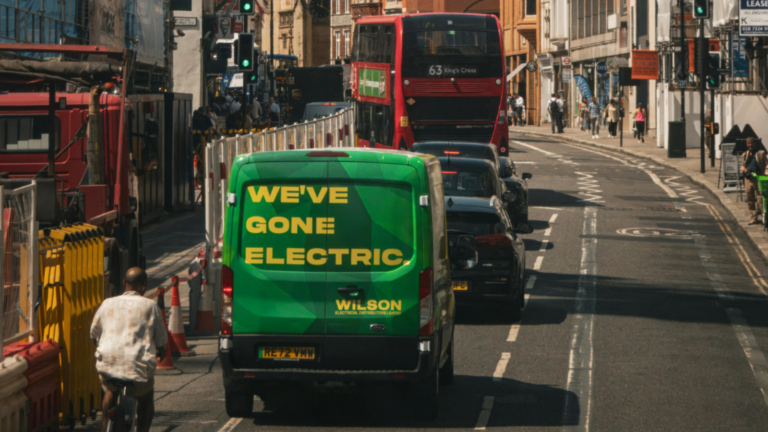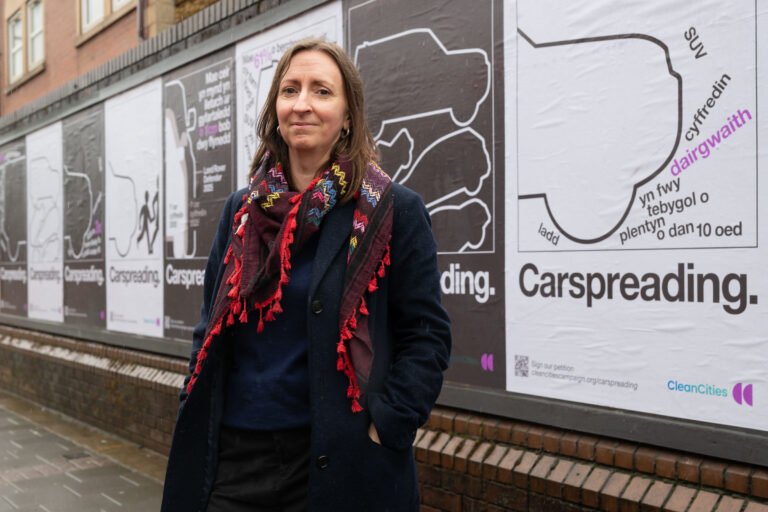
Dutch courage pays off: zero-emission zones spark rapid uptake of electric vans and trucks
By early 2025, 78% of new vans registered in the Netherlands were electric, compared to just 9% across the EU.
- New Clean Cities briefing shows early success of truck and van-focused zero-emission zones – pushing out dirty diesel from cities
- By early 2025, 78% of new vans registered in the Netherlands were electric, compared to just 9% across the EU
- Electric truck sales in the country grew by 188%, far outpacing the European average of 46%
- Municipalities that introduced ZEZ-F, or are simply adjacent to them, record faster electrification and a clear decline in diesel vehicles
The Netherlands’ pioneering zero-emission zones for freight (ZEZ-F) are accelerating the transition to electric delivery fleets and reshaping city logistics, according to a new Clean Cities Campaign briefing released today.
Introduced in January 2025 and now including 18 cities, the Dutch ZEZ-F are the world’s first nationwide programme targeting goods vehicles. The new analysis reveals a sharp rise in electric vans and trucks where ZEZ-F are in place or planned.
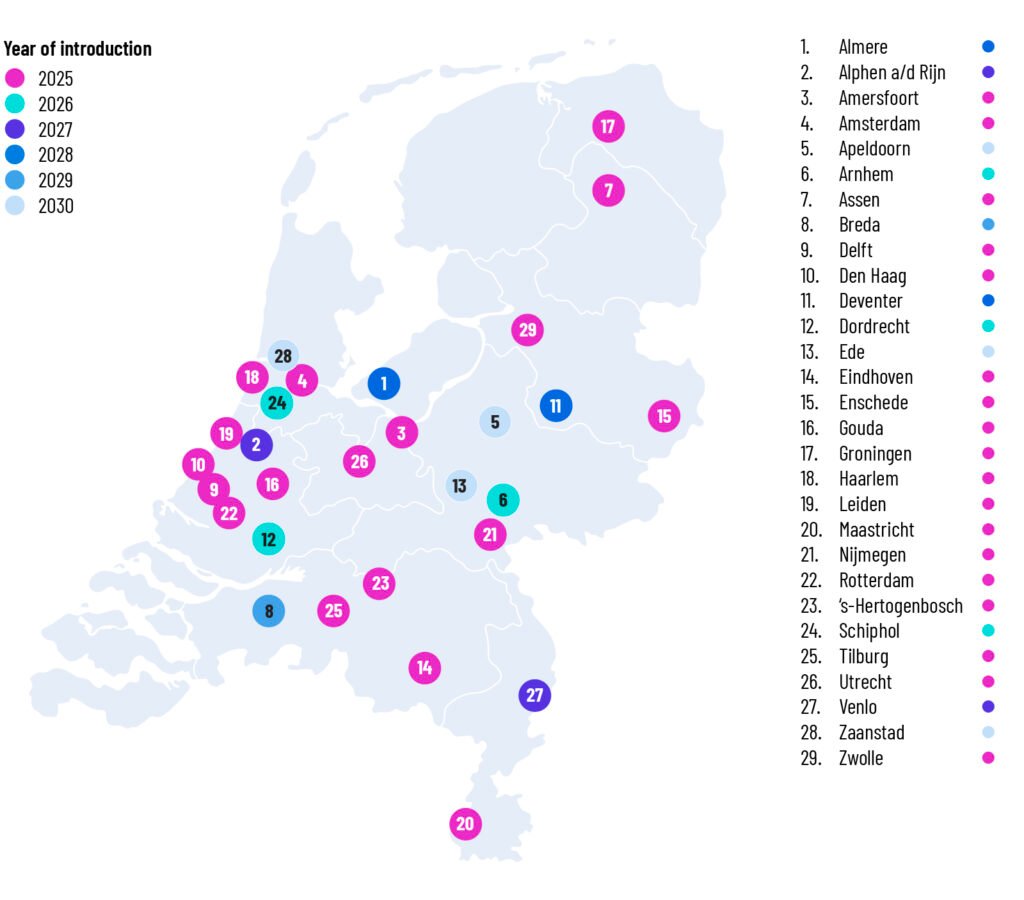
In the first half of 2025, 78% of new vans registered in the Netherlands were battery-electric, compared to an EU average of just 9%.
Electric truck sales in the Netherlands surged by 188% year-on-year, representing nearly one in five new electric trucks sold across the EU.
Municipalities with ZEZ-F, and those which simply neighbour them, show a faster uptake of electric commercial vehicles (6% on average, compared to just 2% in non-ZEZ-F areas).
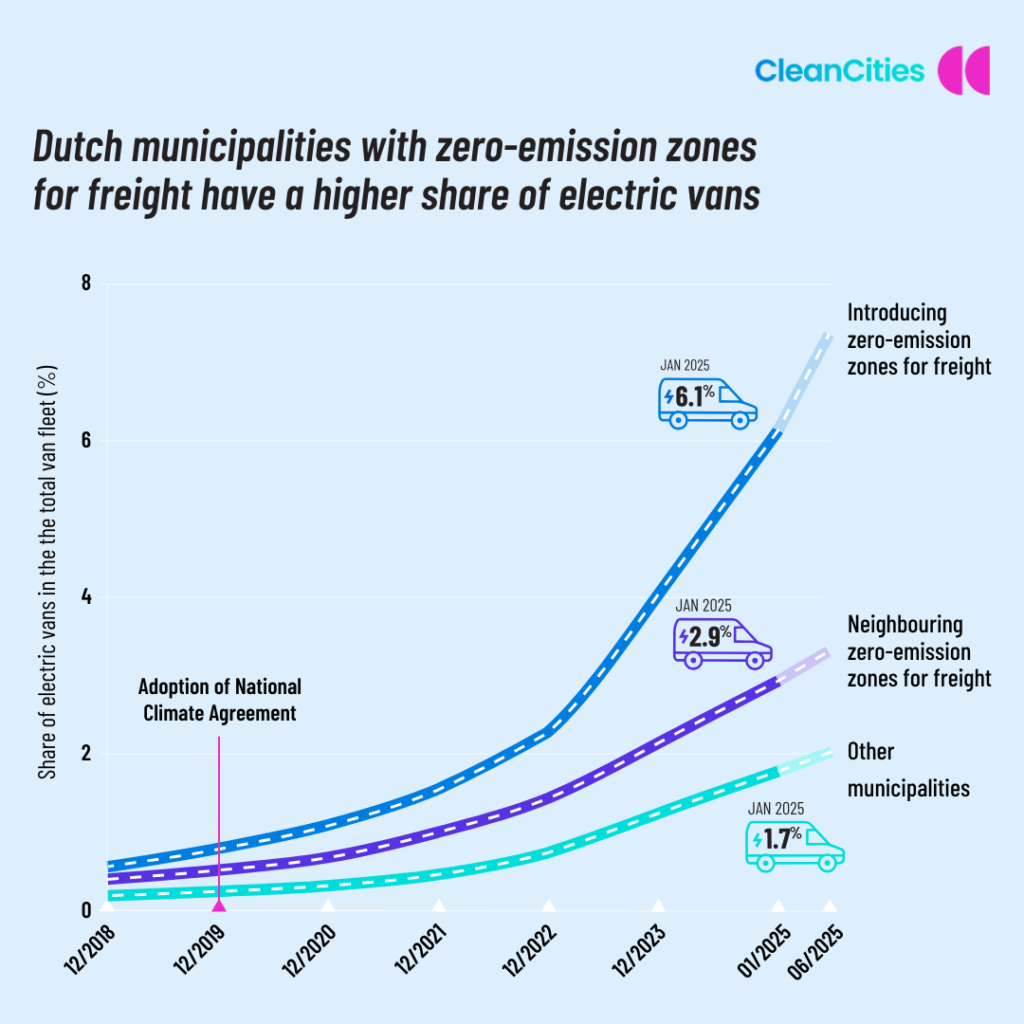
Importantly, the number of diesel vans and trucks is already declining in ZEZ-F municipalities, while it continues to rise elsewhere.
“The Dutch experience proves that zero-emission zones are a game-changer. They provide the clear rules and certainty businesses need to invest in electric fleets. And they mean our city centres can become ‘living districts’ for all by cutting pollution, reducing noise, and creating healthier, safer streets.”
Barbara Stoll, Director of the Clean Cities Campaign
Success depends on combining regulation with financial support: Dutch municipalities received dedicated funding, while companies could access national subsidies for electric vans and trucks, tax breaks, and exemptions during the transition. Enforcement is ensured through number plate recognition and fines.
Previous research by Clean Cities and T&E also shows that by 2026, there will be more electric vans models available than diesel and petrol ones. Besides, total costs of ownership are already lower for most e-vans, a fact confirmed by many Dutch businesses themselves.
Clean Cities recommends that European cities and national governments replicate this model by:
- Announcing ZEZ-F in city centres with long, phased, lead-in times
- Providing clear incentives for electric or pedal-powered vehicles
- Ensuring coordination between national and local rules to avoid a patchwork of measures
- Supporting businesses with charging infrastructure and practical advice
With 33 European cities already planning zero-emission zones before 2030, the Dutch experience offers a blueprint for others to decarbonise the movement of goods and deliver healthier cities for residents.
Notes to editors
[1] The full report can be accessed here.
[2] Editable graphs can be found here.
[3] Key figures and results from the analysis are available as spreadsheet here.
Interviews
To request an interview, please contact Daniel Hale, Head of Media, Clean Cities Campaign, daniel.hale@cleancitiescampaign.org.

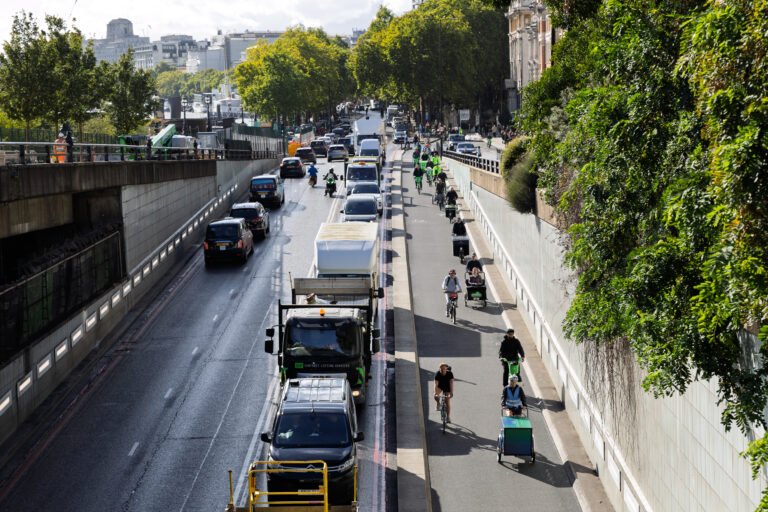
Cargo bike use doubles in London across last two years
